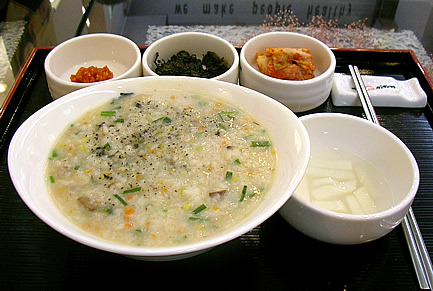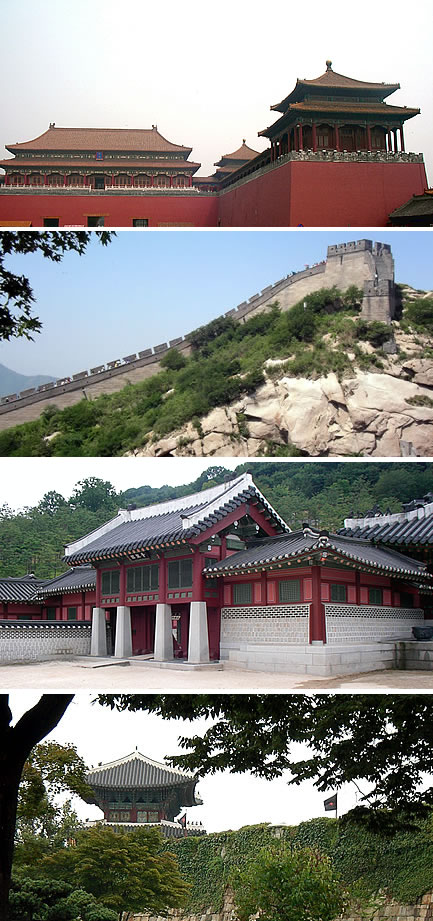These days I cannot imagine myself studying Korean without my electronic dictionary. I bought my e-dictionary in Kyunghee University for 168,000 won(S$280). I must say that it is worthed every cent that I spent. I just like the ease it provides in translating new Korean words. This gadget has the abilty to do translation between Korean and three other main languages, namely English, Chinese and Japanese. It can also function as a pure dictionary for Korean and English. Despite all the functions that it has, I am satisfied just using its Korean-English and English-Korean translation.
From my experience, not all e-dictionaries are made the same. I bought my first e-dictionary in Singapore. It was a popular but expensive Taiwan brand e-dictionary which claims that it can do translation in English, Chinese, Japanese and Korean. The truth is it cannot do it very well. Most of the Korean words which I typed could not be found. Its a pity that good Korean e-dictionaries are not sold in Singapore. I am sorry to say that if you like to have a decent e-dictionary to study Korean, you will either need to go to Korea or get your friend on holiday trip to Korea to buy it for you.
From my experience, not all e-dictionaries are made the same. I bought my first e-dictionary in Singapore. It was a popular but expensive Taiwan brand e-dictionary which claims that it can do translation in English, Chinese, Japanese and Korean. The truth is it cannot do it very well. Most of the Korean words which I typed could not be found. Its a pity that good Korean e-dictionaries are not sold in Singapore. I am sorry to say that if you like to have a decent e-dictionary to study Korean, you will either need to go to Korea or get your friend on holiday trip to Korea to buy it for you.
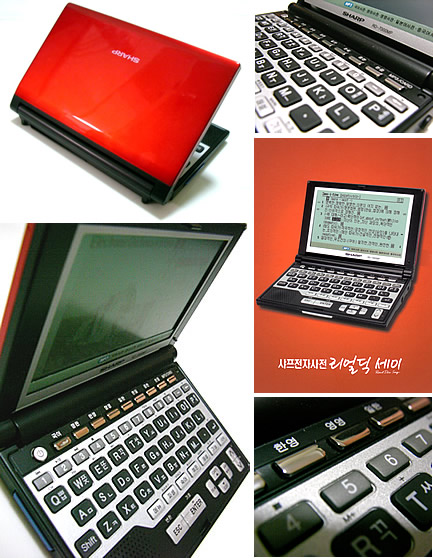

 If I have to make a comparison, Lena Park is in the same league as Mariah Carey(US), Misia(Japan) and Zhang Huimei(Taiwan). They are similar in that they all have a powerful lung and a "voice kissed by the God". Mariah Carey's vocal range was said to stretch over seven octaves while Misia could hit five octaves with ease. Normal singers would be considered to have a good vocal range if they can hit three octaves.
If I have to make a comparison, Lena Park is in the same league as Mariah Carey(US), Misia(Japan) and Zhang Huimei(Taiwan). They are similar in that they all have a powerful lung and a "voice kissed by the God". Mariah Carey's vocal range was said to stretch over seven octaves while Misia could hit five octaves with ease. Normal singers would be considered to have a good vocal range if they can hit three octaves.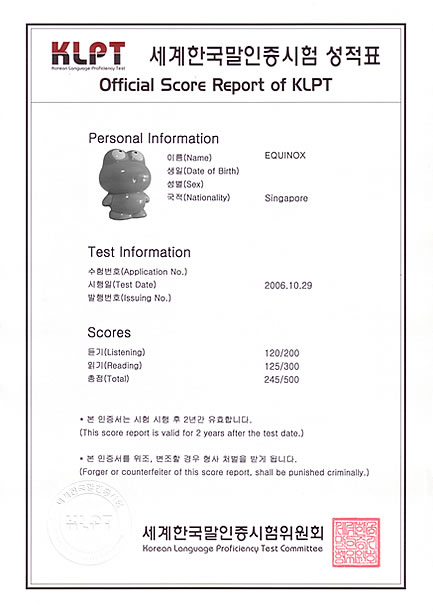



 Above is the iconic university administration building. Our first language lesson was conducted by Kim Seon Saeng Nim in this building. It was a special arrangement made by the Institute of International Education so that we could have the experience of studying in this beautiful building.
Above is the iconic university administration building. Our first language lesson was conducted by Kim Seon Saeng Nim in this building. It was a special arrangement made by the Institute of International Education so that we could have the experience of studying in this beautiful building. [Top Left] Grand Auditorium. [Top Right] Bronze Sculpture. [Bottom] Central Library. The Grand Auditorium can easily be mistaken as a Cathedral but it isn't. The Central Library seems to be a favourite filming site for Korean movie. You can see it in "Classics" and "Traces of Love". Coming from a former British colony, where European-style buildings are common, I still feel that the buildings in Kyunghee are beautiful.
[Top Left] Grand Auditorium. [Top Right] Bronze Sculpture. [Bottom] Central Library. The Grand Auditorium can easily be mistaken as a Cathedral but it isn't. The Central Library seems to be a favourite filming site for Korean movie. You can see it in "Classics" and "Traces of Love". Coming from a former British colony, where European-style buildings are common, I still feel that the buildings in Kyunghee are beautiful.
 This is the slope we had to climb every morning to reach the Institute of International Education where we had our daily lesson. IIE is the white building at the end of this road to the right.
This is the slope we had to climb every morning to reach the Institute of International Education where we had our daily lesson. IIE is the white building at the end of this road to the right. On reaching the entrance of IIE, there were some more steps to climb to the main door. After that, there was still staircase to climb before we finally reached our classroom. It was a good workout every day.
On reaching the entrance of IIE, there were some more steps to climb to the main door. After that, there was still staircase to climb before we finally reached our classroom. It was a good workout every day. One of the thing we did during our lesson was to do a presentation of ourselves. For our standard, we could only read off our script. Frankly, I didn't understand what others were talking about. Neither did I know what I was talking about. At that time, my Korean language standard was really that bad. 미안해요.
One of the thing we did during our lesson was to do a presentation of ourselves. For our standard, we could only read off our script. Frankly, I didn't understand what others were talking about. Neither did I know what I was talking about. At that time, my Korean language standard was really that bad. 미안해요. Kyunghee Seoul campus, is really a very nice place for tertiary education. However, it was not just the place that made this immersion programme memorable. Thanks to our teachers at Kyunghee. The interesting and animated 김민재, the chubby and cool 임채훈 and the cute and shy 고우리. Thanks to our dowoomis who spent their time with us. Finally, thanks to the company of my classmates. I will remember the time when we ate the 32cm-tall ice cream in Myeongdong at near zero temperature. That was a really "cool" experience.
Kyunghee Seoul campus, is really a very nice place for tertiary education. However, it was not just the place that made this immersion programme memorable. Thanks to our teachers at Kyunghee. The interesting and animated 김민재, the chubby and cool 임채훈 and the cute and shy 고우리. Thanks to our dowoomis who spent their time with us. Finally, thanks to the company of my classmates. I will remember the time when we ate the 32cm-tall ice cream in Myeongdong at near zero temperature. That was a really "cool" experience. 
 Yesterday, my KLPT class had a post-KLPT gathering. We have our dinner at a Korean restaurant. Our Korean teacher assistant, 이윤숙, joined us for the gathering. It is probably the last time we will see her. She is going back to Korea at the end of this month after 11 months in Singapore. She came here for the purpose of studying Chinese at NUS Extension. So yesterday dinner was also sort of a farewell dinner for her.
Yesterday, my KLPT class had a post-KLPT gathering. We have our dinner at a Korean restaurant. Our Korean teacher assistant, 이윤숙, joined us for the gathering. It is probably the last time we will see her. She is going back to Korea at the end of this month after 11 months in Singapore. She came here for the purpose of studying Chinese at NUS Extension. So yesterday dinner was also sort of a farewell dinner for her.





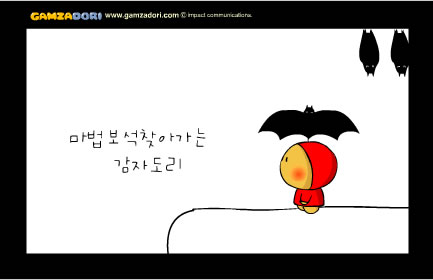


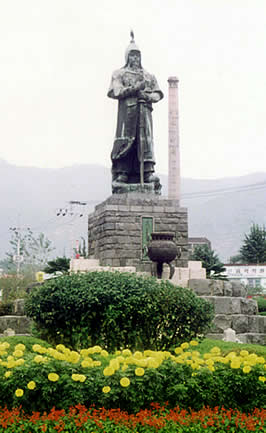

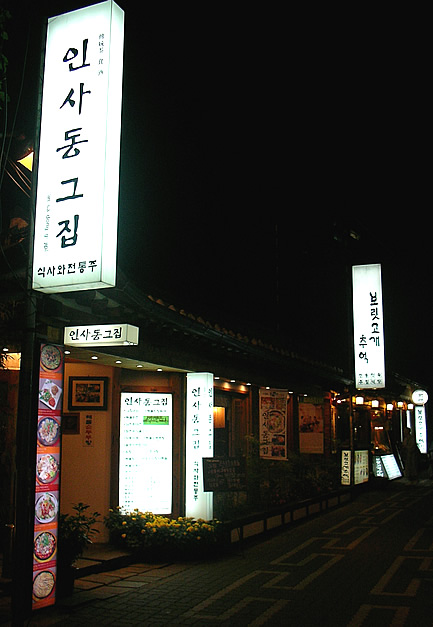 This Korean restaurant in Insadong is simply called "인사동그집" or "Insadong That Eating House". It is like saying I don't know the name of the eating house but you know at Insadong that eating house, that one, you know, you know? Or in Singapore context, I can say Katong That Laksa or Tiong Bahru That Chwee Kueh or Changi That Nasi Lemak and Singaporeans will go ya ya ya (yes, yes, yes), that one, I know, I know. In a certain sense, "인사동그집" can mean THE eating house of Insadong. I would think that only eating house worth their salt would dare to go by such "name". I could only think because I never went in and tried out the food and wine. That eating house was quite crowded though.
This Korean restaurant in Insadong is simply called "인사동그집" or "Insadong That Eating House". It is like saying I don't know the name of the eating house but you know at Insadong that eating house, that one, you know, you know? Or in Singapore context, I can say Katong That Laksa or Tiong Bahru That Chwee Kueh or Changi That Nasi Lemak and Singaporeans will go ya ya ya (yes, yes, yes), that one, I know, I know. In a certain sense, "인사동그집" can mean THE eating house of Insadong. I would think that only eating house worth their salt would dare to go by such "name". I could only think because I never went in and tried out the food and wine. That eating house was quite crowded though.  In Korea, 청색(靑色) looks blue. That's why 청와대(靑瓦臺), the official residence of the South Korean President, is called the Blue House and not the Green House. To me, 청색 is green because 靑色 in Chinese is green. In Korean, green is called 녹색(綠色) or 초록색(草綠色). It took me quite some time to tell the difference.
In Korea, 청색(靑色) looks blue. That's why 청와대(靑瓦臺), the official residence of the South Korean President, is called the Blue House and not the Green House. To me, 청색 is green because 靑色 in Chinese is green. In Korean, green is called 녹색(綠色) or 초록색(草綠色). It took me quite some time to tell the difference.
 The day came when I understood what my teacher was trying to impress upon me. In the 2nd Korean Langauge Speech Contest, NUS Extension was represented with nine speakers among the nineteen finalists. It may not seem significant unless I tell you that my teacher was only given a week's notice to inform all her students about the contest. The students were required to submit their presentation articles within days before the registration closing date.
The day came when I understood what my teacher was trying to impress upon me. In the 2nd Korean Langauge Speech Contest, NUS Extension was represented with nine speakers among the nineteen finalists. It may not seem significant unless I tell you that my teacher was only given a week's notice to inform all her students about the contest. The students were required to submit their presentation articles within days before the registration closing date.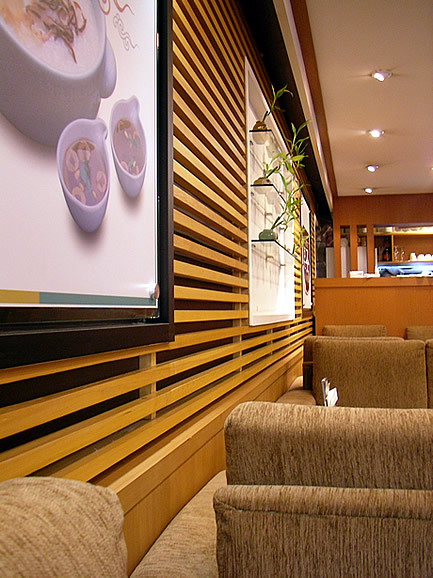 The mushroom vegetable porridge was quite delicious although I did not find anything special about Korean porridge except the presentation of the porridge and the side dishes. I don't mind another bowl of mushroom vegetable porridge but I do prefer eating Teochew porridge or Taiwan porridge.
The mushroom vegetable porridge was quite delicious although I did not find anything special about Korean porridge except the presentation of the porridge and the side dishes. I don't mind another bowl of mushroom vegetable porridge but I do prefer eating Teochew porridge or Taiwan porridge.